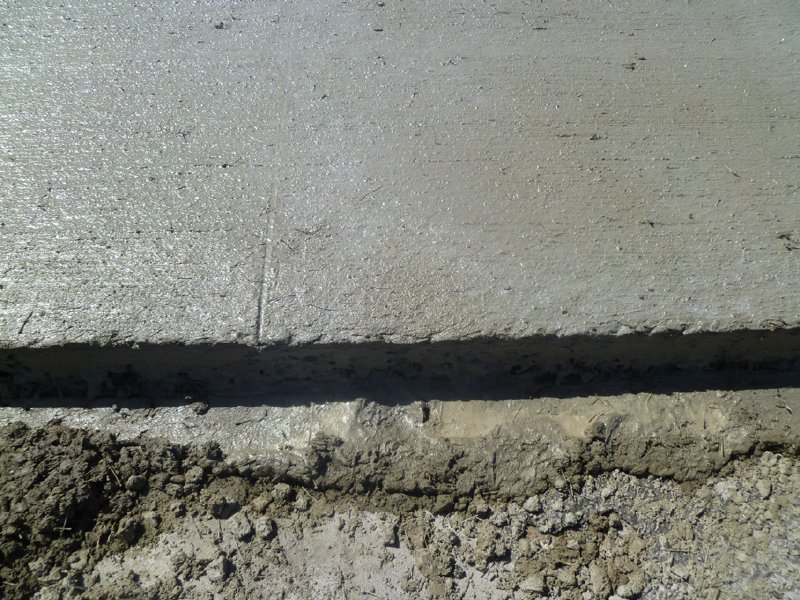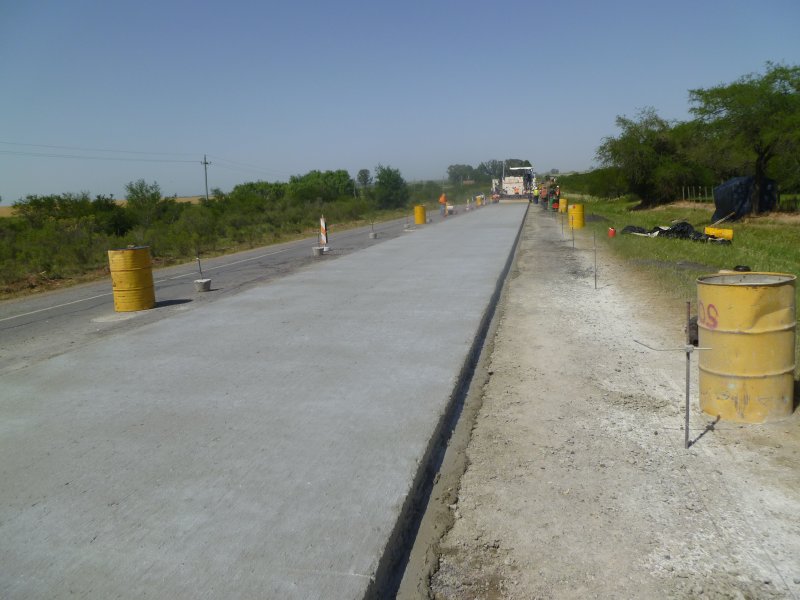Ultra Thin Pavement Slab Design with TCPavements and Elasto Plastic Concrete
Thin Concrete Pavements (TCP) is a revolutionary design method allowing engineers to install concrete roadway pavements that;
- Are up to 10cm thinner than traditional concrete slabs,
- Can be laid on poor ground,
- Can be laid on existing asphalt,
- Have increased fatigue resistance, and,
- Have improved durability

Figure 1, load distribution on a traditional slab design

Figure 2, load distribution on a slab optimised with a TCP design
To achieve this TCP designs optimise the dimensions of concrete pavement slabs. TCP slabs are smaller than typical concrete slabs, as seen in figures 1 & 2, which allows them to better share the load of heavy vehicles by ensuring heavy vehicles never load with more than one set of wheels on any given slab. Figures 1 & 2 also demonstrate that the smaller slabs have also reduced fatigue due to minimised curling on each slab by maximising the amount of contact the slab has with the ground.
The changes to slab dimensions allow for dramatically thinner pavements, in fact,
TCP slabs can be 10cm thinner than traditional concrete slabs.
TCP vs Traditional Concrete Slab Design
Traditionally, slab designs have been calculated using the AASHTO 93 equation which recommends 3.5m to 5m long slabs. However, this design does not consider slab length as relevant to thickness of design, in fact, AASHTO 93 attempts to design slabs as large as possible to reduce joints.

TCP Design

AASHTO 93 Design
Testing and real life application has shown that TCP designs are far greater at minimising stresses on slabs than traditional AASHTO designs. By optimising slab sizes TCP designs share stress much more effectively allowing for thinner pavements and longer asset lifetimes.

Stress v Slab Dimensions

Synthetic Fibers in TCP Designs
Barchip’s structural synthetic fibers are engineered copolymer fibers used as concrete crack control and structural reinforcement in concrete. The system works by distributing tens of thousands of high tensile fibers throughout the concrete mix. Because fibers are mixed throughout the entire slab they begin reinforcing at the exact point of stress and improve the overall ductility and durability of the concrete slabs.
By reinforcing Thin Concrete Pavements with Barchip’s industry leading macro synthetic fibers engineers are able to maximise the durability of their asset and increase production speeds while minimising the cost of material, labour, storage and transport.
Download Files
Cerro Sombrero Project Sheet Download
BarChip fibers were used to completely replace crack control steel in this pioneering road design
Artigas Highway Project Sheet Download
Minimum cost, maximum durability with BarChip reinforced Ultra Thin Whitetopping road rehabilitation







